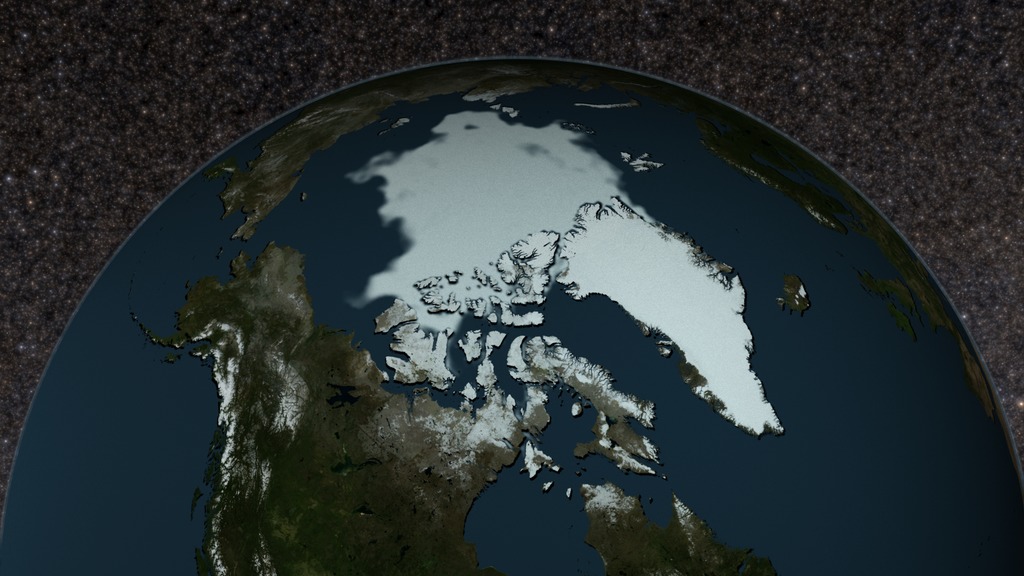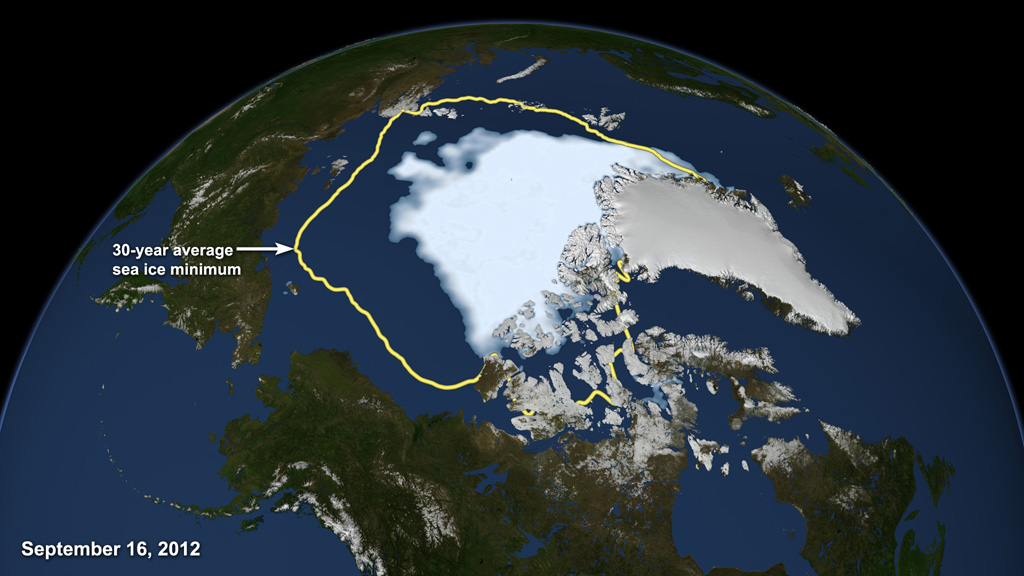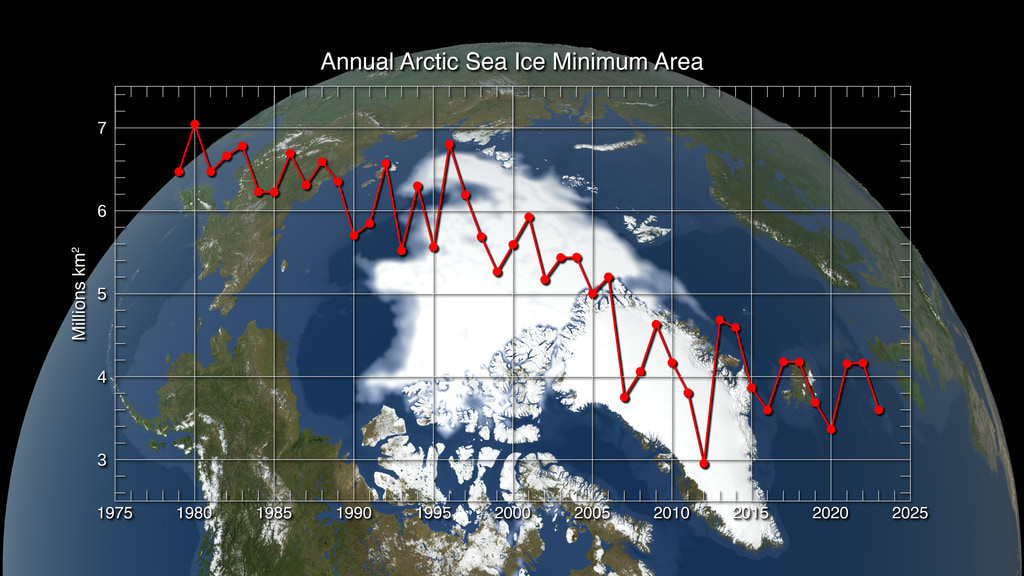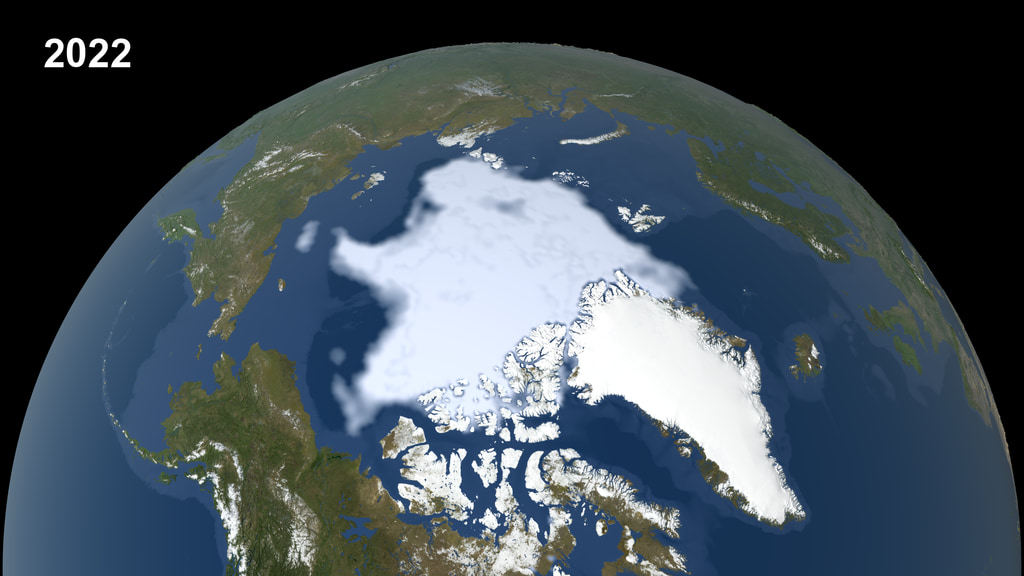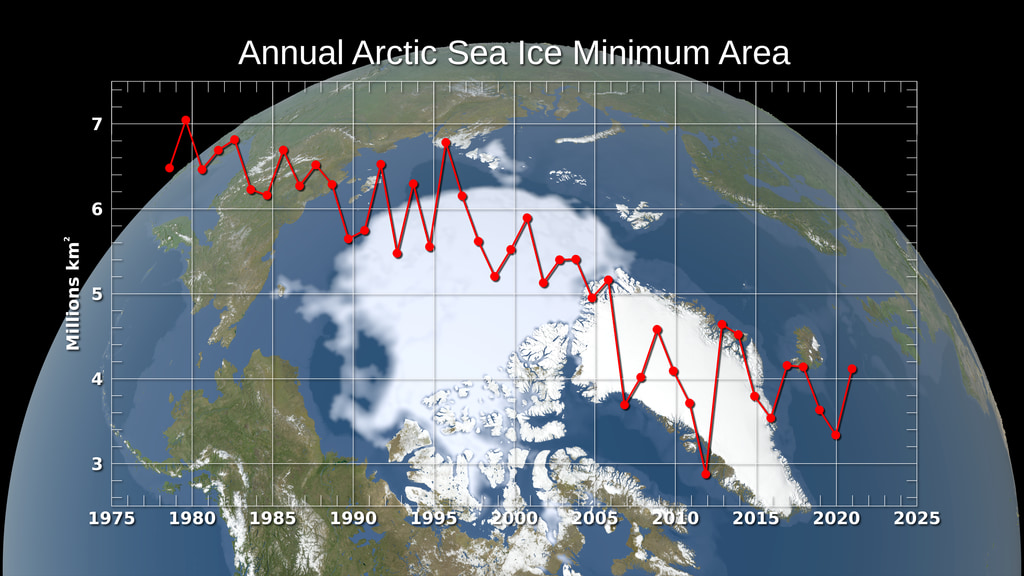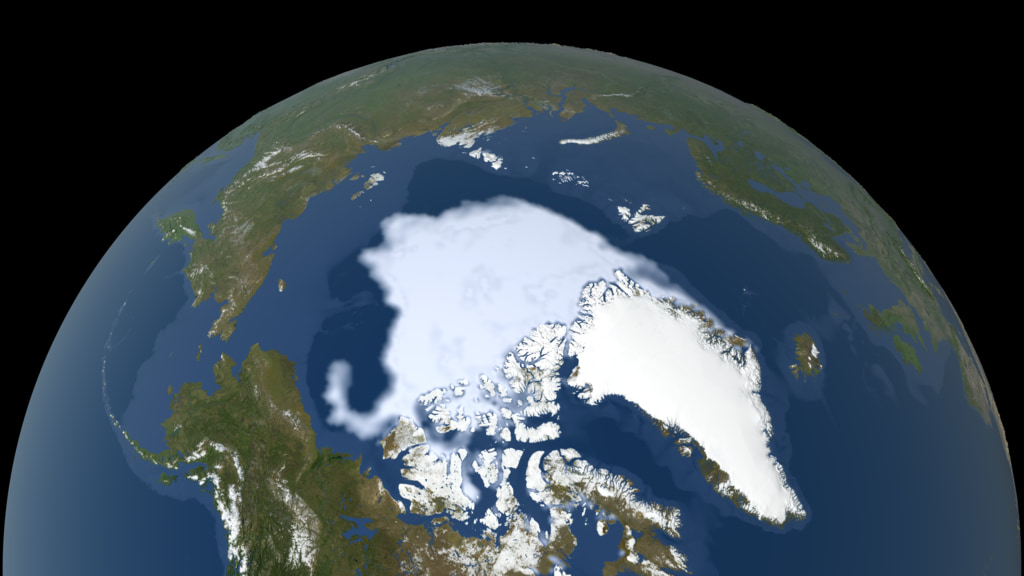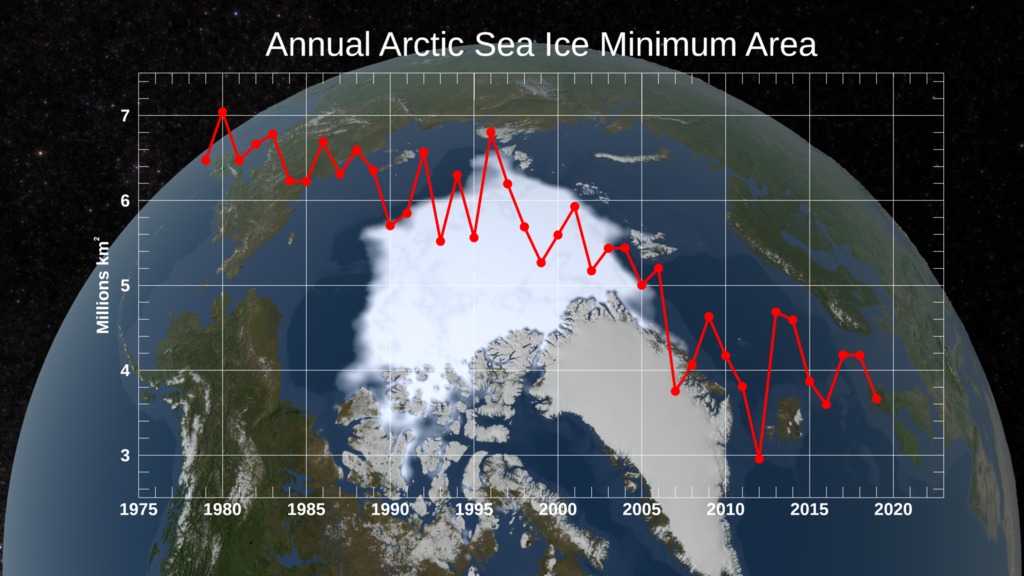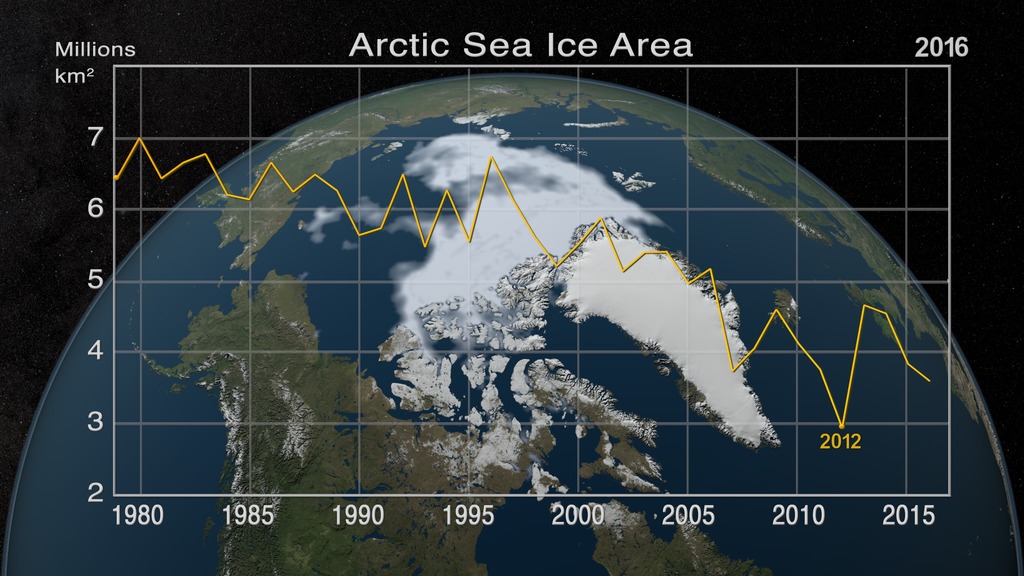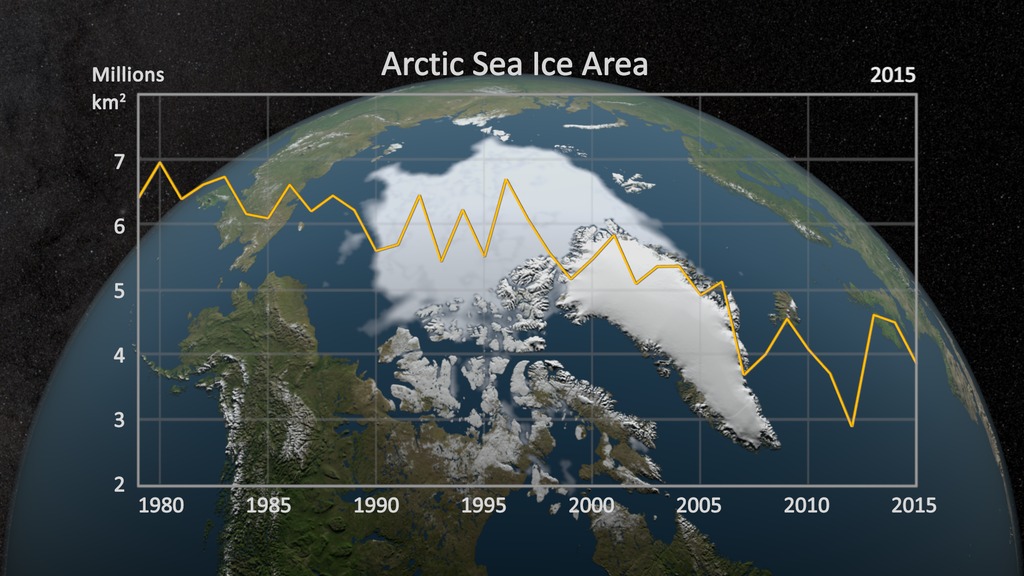A newer version of this visualization is available.
Sea Ice Yearly Minimum 1979-2012 (SSMI data) with Graph
The continued significant reduction in the area covered by the summer sea ice is a dramatic illustration of the pronounced impact increased global temperatures are having on the Arctic regions. There has also been a significant reduction in the relative amount of older, thicker ice. Satellite-based passive microwave images of the sea ice cover have provided a reliable tool for continuously monitoring changes in the Arctic ice cover since 1979. The ice parameters derived from satellite ice concentration data that are most relevant to climate change studies are sea ice extent and ice area. This visualization shows the annual September minimum sea ice area in the background and a graph of the ice area values foreground. The ice area provides the total area actually covered by sea ice which is useful for estimating the total volume and therefore mass, given the average ice thickness. For more information about these ice datasets, see The Journal of Geophysical Research VOL. 113, C02S07, doi:10.1029/2007JC004257, 2008
This visualization shows the annual Arctic sea ice minimum from 1979 to 2012. A semi-transparent graph is overlaid that shows the area in million square kilometers for each year's minimum day. The '1979', '2007', and '2012' data points are highlighted on the graph.
For high resolution still images of the 1979 and 2012 September sea ice minimum, see visualization #3998.
This animation shows a semi-transparent graph of the annual minimum area of sea ice in millions of square kilometers. The background shows the annual minimum sea ice concentration over the arctic for each year from 1979 through 2012.
The graph alone with transparency.
The Arctic with yearly minimum sea ice with dates.
The Arctic with yearly minimum sea ice
The date overlay with transparency.
Credits
Please give credit for this item to:
NASA/Goddard Space Flight Center Scientific Visualization Studio
The Blue Marble data is courtesy of Reto Stockli (NASA/GSFC).
-
Visualizer
- Cindy Starr (Global Science and Technology, Inc.)
-
Animators
- Greg Shirah (NASA/GSFC)
- Lori Perkins (NASA/GSFC)
-
Producers
- Jefferson Beck (USRA)
- Patrick Lynch (Wyle Information Systems)
-
Scientists
- Josefino Comiso (NASA/GSFC)
- Robert Gersten (Wyle Information Systems)
-
Project support
- Laurence Schuler (ADNET Systems, Inc.)
- Ian Jones (ADNET Systems, Inc.)
Release date
This page was originally published on Wednesday, September 19, 2012.
This page was last updated on Tuesday, November 14, 2023 at 12:03 AM EST.
Series
This visualization can be found in the following series:Datasets used in this visualization
-
[DMSP: SSM/I]
ID: 11Defense Meteorological Satellite Program Special Sensor Microwave Imager
See all pages that use this dataset -
Sea Ice Concentration [DMSP: SSM/I]
ID: 290 -
Comiso's September Minimum Sea Ice Concentration
ID: 540
Note: While we identify the data sets used in these visualizations, we do not store any further details, nor the data sets themselves on our site.
